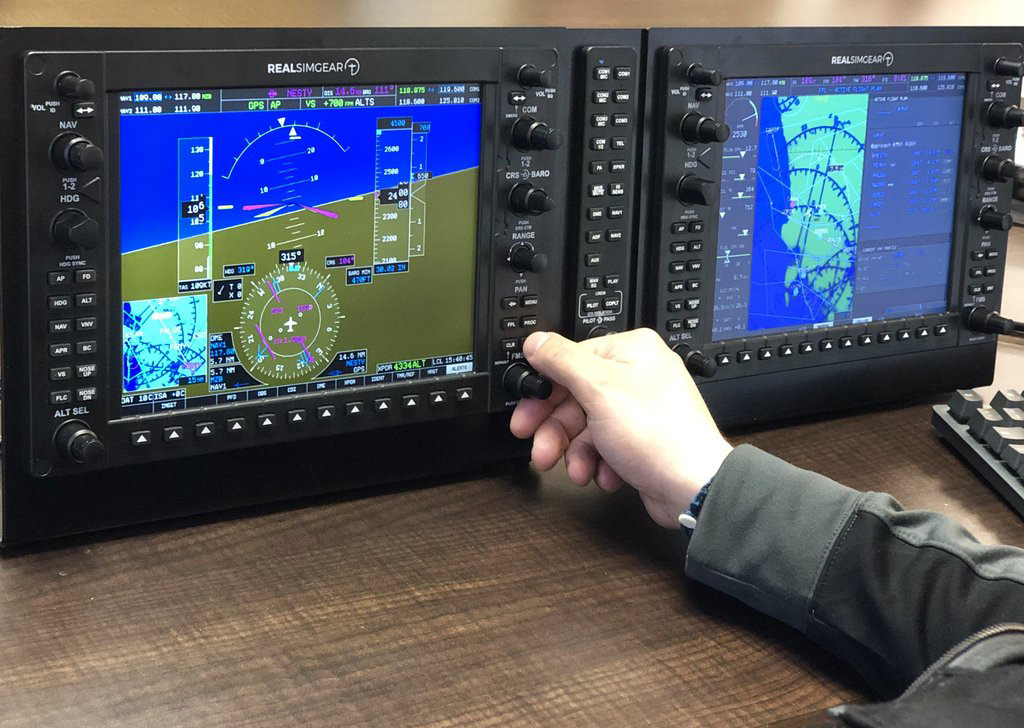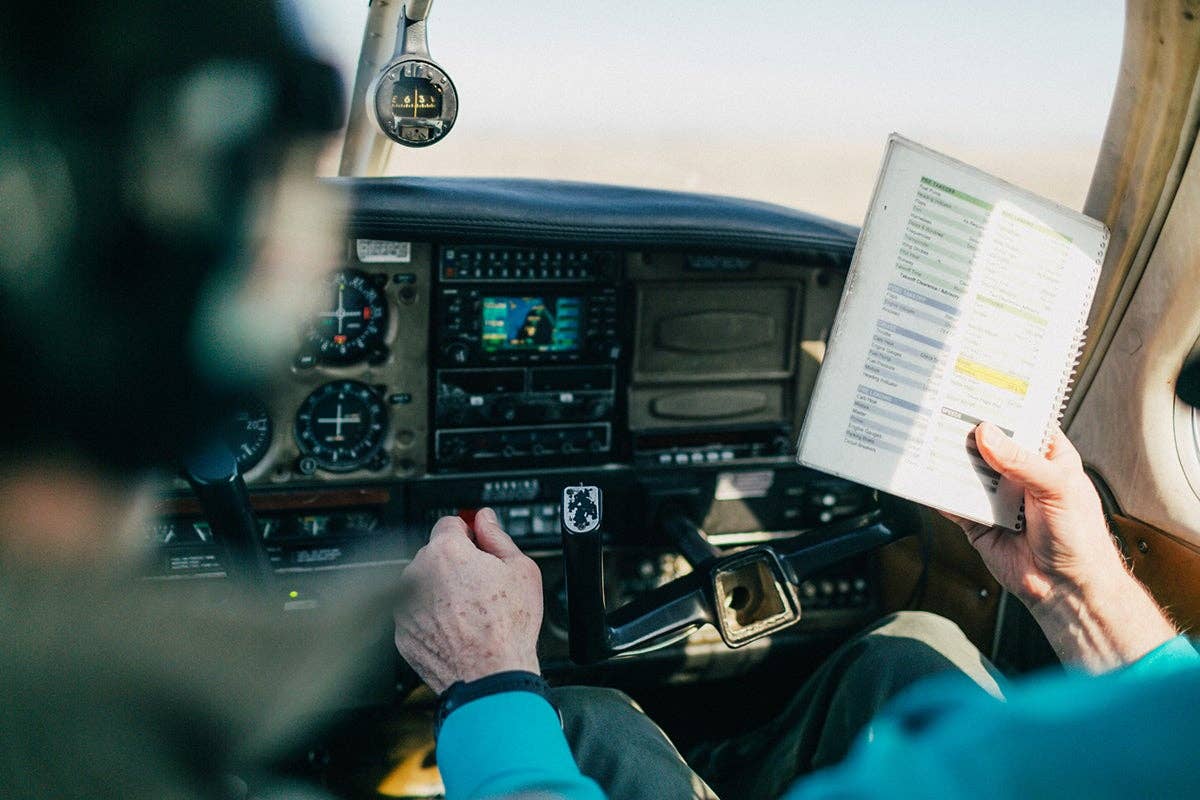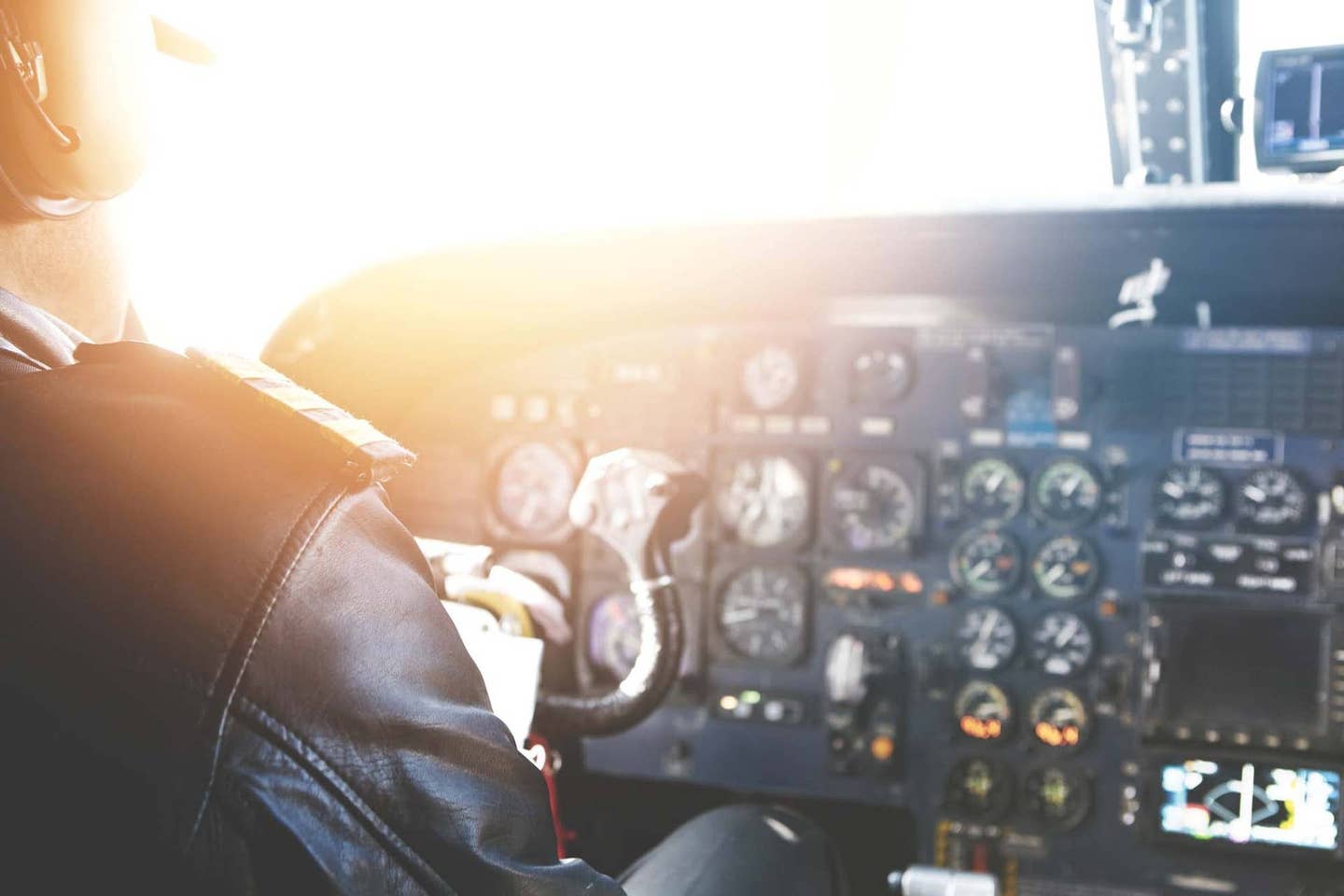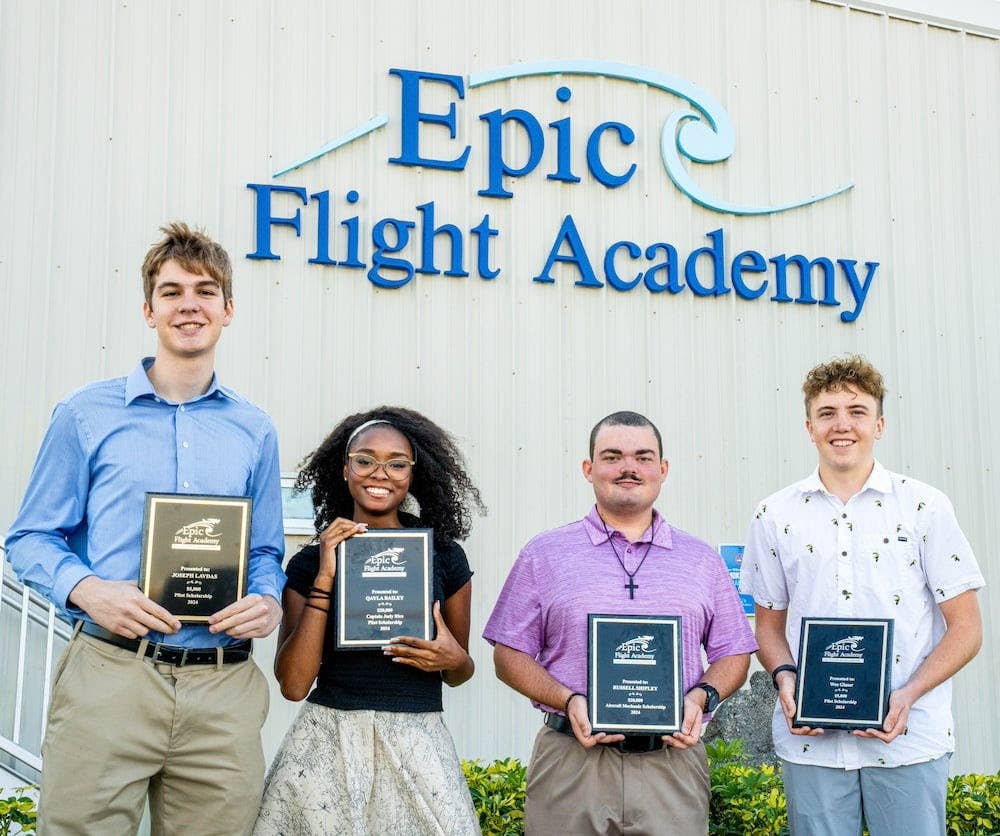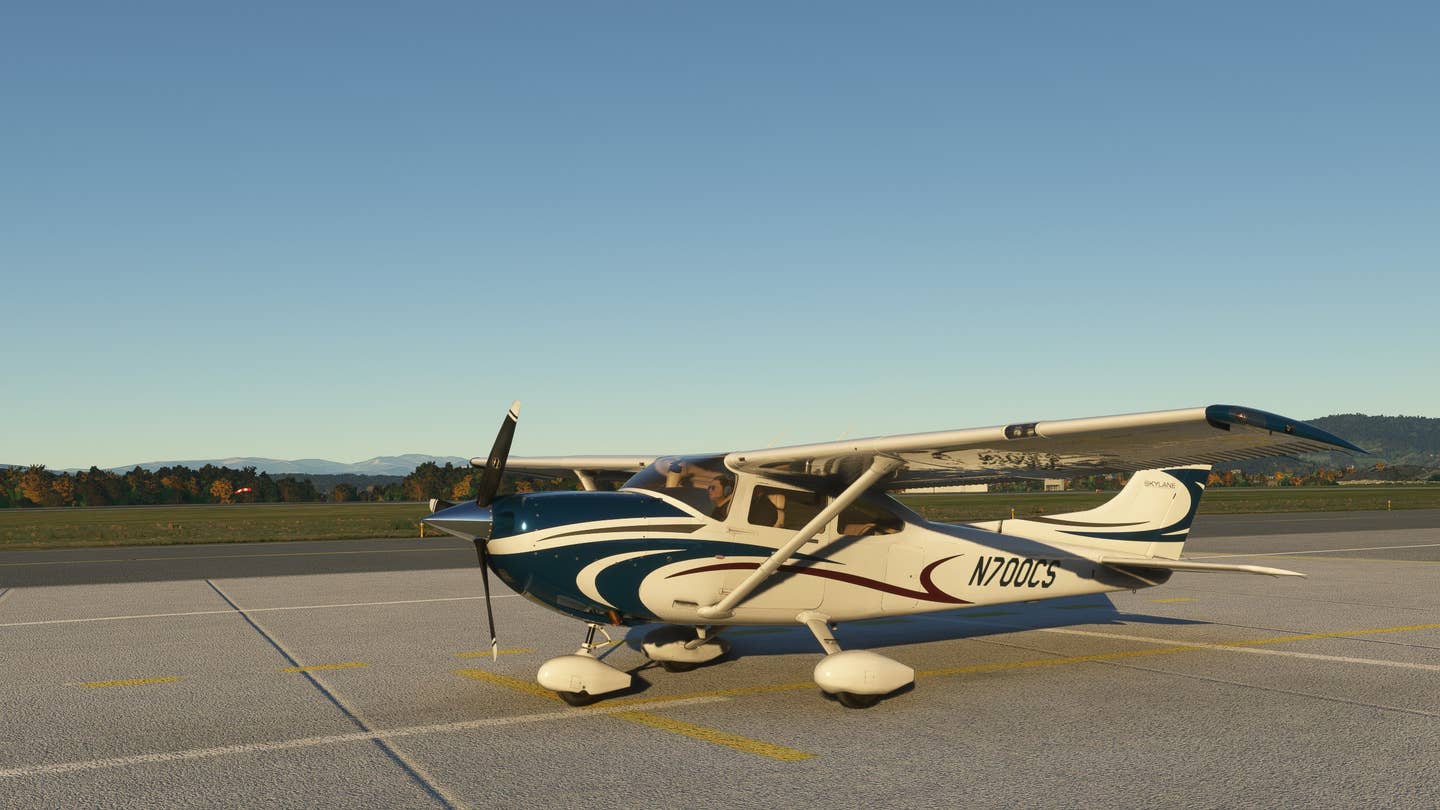
I climbed a few thousand feet and completed my tests. When it was time to land, I reduced the throttle to idle.
“That’s when we experienced a huge explosion. I was jolted in my seat. I saw both of the bomb-bay doors blow away. We were completely engulfed in flames. I could see the flames were already licking my legs and feet. I told my mechanic to jump. He hesitated.”
Bob Hoover, one of the greatest test pilots to have ever soared around this planet, described one of his most unnerving flying experiences in the early 1940s in his autobiography, Forever Flying. He was test-flying the Vultee Vengeance A-31, a single-engine, two-seat light attack bomber that was experiencing torching — a condition causing a fire when the throttle is reduced to idle with an excessively rich fuel mixture.
During those early years of aircraft development, flight-testing was a very risky profession. Aircraft designs were aerodynamically unstable and engines unreliable, and airframes disassembled in the air. Unfortunately, many talented pilots perished as a result.
Fortunately, with the development of computer-aided aircraft design technologies and decades of know-how, this exciting profession has become a lot safer. But, deservedly, it hasn’t made the profession any less admired and it’s still far from risk-free.
There is no such thing as a test pilot license. Any pilot crazy enough to jump into an airplane that has never been flown before can legally do so, as long as the applicable category and class requirements are met. But Darwinian logic states that training is a good thing. And no sane aircraft manufacturer and certainly no military establishment would let just any pilot jump in and fly its newly developed airplane.
So what does it take to become a qualified test pilot? I decided to find out for myself by visiting the only civilian test pilot school in the world — the National Test Pilot School (NTPS) in Mojave, California, right next door to Edwards Air Force Base, where Hoover and Chuck Yeager conducted their legendary dogfights, and successfully completed the first supersonic flight nearly 64 years ago.
In addition to its test pilot history, the location was chosen to take advantage of the R-2508 complex — an area containing restricted airspace, MOAs and ATCAAs (air traffic control assigned airspace) needed for flight testing. Additionally, Mojave Air and Space Port’s 12,500-foot-long, 200-foot-wide runway is capable of supporting any aircraft, including the space shuttle.
Airspace and airport necessities aside, consistent weather patterns are another requirement for continual test flights, and the pilot term CAVU (ceiling and visibility unlimited) aptly describes the weather pattern in the Mojave Desert. NTPS claims there are fewer than five non-VMC days per year. There may not be any place on Earth better suited for the location of a flight-test school.
The History
While the military has conducted test flights at the nearby Edwards Air Force Base since the early 1940s and trained test pilots there since the early '50s, it doesn't do civilian certification test flights or training. There are only three other world-recognized test pilot schools: the Naval Air Station in Patuxent River (aka Pax River), Maryland; EPNER (École du Personnel Navigant d'Essais et de Réception), a French test pilot school in Istres, France; and, the oldest one, Empire Test Pilots' School, at the Ministry of Defence's Boscombe Down in Idmiston, United Kingdom. Established in 1943, Empire does some civilian training, but none of the other schools offer training toward civil certification.
During the 1970s, Seán Roberts, a highly experienced test pilot from Great Britain, started conducting a two-week course in a de Havilland Dove — a 400 horsepower, twin engine, low-wing aircraft originally designed as an 11-seat, short-haul airliner. The Dove had been converted for test pilot training, with instrumentation to measure performance and flying qualities. It could accommodate a pilot, an instructor and six students at a time, making it a wonderful platform for flight-test training.
Roberts conducted his course at several universities around the United States, and he also contracted with Edwards Air Force Base, Pax River, Wright-Patterson Air Force Base and Canadian Forces Base Cold Lake, Canada, where he met his wife, Nadia. Roberts jokes that he reduced the Canadian female flight-test engineer population by 50 percent when he brought her with him to the United States. Together, Seán and Nadia founded the National Test Pilot School in 1981 at the suggestion of Jack Krings, a test pilot from McDonnell Douglas who was first to test-fly the F-18 Hornet and who had realized the need for a civilian test pilot school responsive to the needs of aircraft manufacturers.
“We started the school and no one came,” Roberts says; but it wasn’t because there was no need. “I got a call from Col. [Luiz] Cabral, chief test pilot at Embraer. He wanted us to go to Brazil to train them and test-fly all the airplanes. We did.” An ensuing article in Aviation Week on NTPS and the Brazilian excursion resulted in a worldwide tour of flight-test training.
“We spent less than 30 days a year in the United States between 1981 and 1986,” Roberts says, “and I added at least 50 airplanes to my list during that time. It was amazing.”
While the traveling was exciting, the couple got tired of roaming the world. In 1986 they built the main hangar at the Mojave Air and Space Port. And now students come from all over the world to attend their professional test pilot and flight-test engineer programs.
The instructors wear civilian clothing (unless they’re flying, in which case they wear flight suits), and there’s no requirement to stand at attention. But the casual atmosphere does not imply a lack of professionalism. The instructors average more than 20 years of flight-test experience and 10 years of test pilot instruction; most are retired military pilots.
The Students
Before visiting NTPS, I was under the impression that pilots would go there with hopes of getting a job as a test pilot. I was wrong, and no matter how well a test pilot gets paid, it would take some time to pay back the $891,000 tuition for the yearlong program. All students attending the professional course at NTPS are sent by their employers. Though the school was founded on the basis of civilian test pilot training, 90 percent of the professional test pilot students have a military affiliation.
Ninety-five percent of the attendees are international. The students in the current class come from Australia, Canada, Israel, Italy, Thailand and Germany.
The international nature of the school creates some complications. In 2000, a request came from Pakistani students to attend the school, which led to the U.S. State Department temporarily closing down the school. The shutdown resulted in a requirement for the school to go through an approval process for each country that wanted to send students there under the State Department’s ITARs (International Traffic in Arms Regulations). Approval has not been a problem with NATO customers and other close allies, but for other countries, such as China, Pakistan and Korea, there is a limitation on the content the school is allowed to teach. Therefore, these students must be instructed separately.
NTPS tailors its programs entirely to the students’ needs. Some of them participate in only part of the curriculum, and those who want to finish the program are not required to complete the full year at once. Some students spread the course over several years. There are, however, strict prerequisites for acceptance in the professional course. Test pilot students must have excellent English proficiency, 750 hours of pilot-in-command time and a bachelor’s degree (or military equivalent) in math, science or engineering.
Students attending the short courses come from all backgrounds. Military students still comprise about 50 percent of these students, but others come from various settings such as aircraft manufacturers and even corporate flight departments.
The Courses
The yearlong professional test pilot and flight-test engineer course is the core of the business at NTPS. It is divided into two phases. Systems are taught during the first half of the year, and students learn about avionics, night vision goggles, electro-optics and FLIR (forward looking infrared), to name a few. During the second half of the year, performance and flying qualities are taught. Students can opt to start in either January (A Class) or July (B Class).
At the completion of the course, the students must conduct a full analysis of an aircraft they’ve never flown or tested before. During this monthlong final project, the students develop a test plan, collect and analyze data, and determine whether the aircraft in question is suitable for its designed mission. Some past projects have included evaluations of the T-38 and L-39 as advanced trainers, the F-18 as a fighter jet and the Cessna Caravan as a light transport aircraft.
This project serves as a simulation of the student’s upcoming test pilot duties and also becomes the thesis for the completion of a Master of Science in flight-test engineering. NTPS was accredited by ABET — the Accreditation Board for Engineering and Technology — in 2006.
There are many other courses being offered at NTPS, however. In addition to short courses such as spin, formation flight and upset recovery training, the school won an FAA contract for a transition course. This six-week course teaches military test pilots the ins and outs of civilian test pilot work conducted at ACOs (Aircraft Certification Offices) and other departments within the FAA.
One of the most recently added courses is a two-week unmanned aerial vehicle (UAV) course. It uses flight and simulator exercises designed to introduce students to the challenges associated with flight-testing UAVs.
The school modified a Cessna 150 that is remotely operated from the ground. It calls it a “surrogate UAV” because a pilot is required to occupy the airplane. From the outside, the airplane looks just like any other Cessna 150, with the exception of the obvious Experimental lettering on the fuselage. On the bottom of the instrument panel, there is a small box with switches for the UAV system. And underneath the seats and below the luggage area there is a plethora of electronic boxes and wires connected to the flight controls.
The 150 is truly a mixture of the past and the future, and it gave me the feeling that I was poking my head into the Terminator version of the aviation world — part airplane and part robot — and I felt as if the 150 were staring at me with its evil red eye saying “Hasta la vista, baby.” I prefer airplanes that want to be flown rather than to fly themselves, but I have to admit it was an interesting project. And since UAVs are being used increasingly in the military and civilian world, future test pilots and flight-test engineers will need to know how to handle them.
The Aircraft
The Cessna 150 is just one of NTPS' remarkable offerings of about 30 aircraft types. The unique stable incorporates old and new technology. Many of the airplanes — such as the de Havilland Dove still in operation at the school — are equipped with instrumentation capable of measuring flight data that can later be analyzed by the students.
Several of NTPS’ airplanes were previously used as prototypes, such as its three Cirrus SR22s, which are used for human-factors and advanced avionics training including synthetic and enhanced vision. There is also a Gippsland GA8 Airvan equipped with a FLIR system in the cargo pod and weather radar on the right wing. Both systems can be operated and evaluated on a large display in the passenger area of the aircraft.
The most unusual aircraft in NTPS’ fleet are the two NDN Firecrackers. They were both single-engine prototype military trainers — one piston (NDN-1), the other turboprop (NDN-1T) — but the prototypes never made it to production. The Firecrackers are used for spin training at NTPS.
One of the jets also used for spin training is the Aermacchi MB-326 Impala — a single-engine jet trainer and light attack aircraft. This two-seat aircraft is powered by a Rolls-Royce Viper MK22-1 jet engine rated at 2,500 pounds of thrust. With a limiting speed of 450 knots (calibrated), load factor limits of +7.5 and -2.5 G and a service ceiling of more than 40,000 feet, this is a very capable trainer that’s also used for loads, vibration and flutter test training.
The professional test pilot curriculum includes transonic and supersonic flights. NTPS obtained its five Saab SK 35 Draken aircraft as a trade for flight training with the Danish military in the early 1990s, and each professional test pilot student completes four or five Draken sorties. Only two of the Drakens are operational — the others are used for parts. I noticed that one of them had only a single seat, and when I questioned my guide, Yannis Tsolekas — NTPS director of operations and a U.S. Air Force test pilot school graduate — on how it was used for training, he said it was for project flying and currency training for the instructors. My feeling is that it’s a perk allowing the instructors to go out and have some fun. After all, the school’s highly qualified instructors are huge assets, and to say that entertainment options in Mojave are limited would be an understatement. I would bet that one of the biggest things that keeps them there is the opportunity to fly cool airplanes.
Helicopter pilots train mostly in the school’s two Bell OH-58C Kiowas and two MBB (Messerschmitt-Bölkow-Blohm) Bo 105s, all instrumented to record performance and flight qualities data, and a Bell UH-1N, which is fully equipped for flight-testing.
Most of the school’s aircraft fly under experimental airworthiness certificates, for which there is a limitation on flight training. NTPS has obtained a letter of deviation authority from the FAA that allows the school to provide flight training in its experimental aircraft.
With such a unique fleet, maintenance and availability of parts can be a challenge, and the technicians have learned to be creative. All maintenance is done through NTPS’ sister company — Flight Research Inc. (FRI), which is run by Nadia Roberts. In addition to maintenance, FRI conducts actual flight-test projects — anything from STC work to aircraft type certification. This offshoot was necessary since the school is organized as a nonprofit educational facility.
In addition to the impressive aircraft fleet, instructional tools include several simulators, a night-vision-goggle lab and a telemetry room. The school also uses simulators and aircraft from other facilities to provide even more diversity to its students.
The goal at NTPS is to produce flight-test pilots and engineers who are able to analyze practically any type of aircraft. With its ideal location, remarkable instructors and impressive variety of hardware, NTPS’ students (and its employees) can be guaranteed the best possible training environment for a very complicated profession.
>>> Exclusive to the iPad: Download the April edition for more on the unique aircraft at NTPS and information on test pilot jobs.

Sign-up for newsletters & special offers!
Get the latest FLYING stories & special offers delivered directly to your inbox

